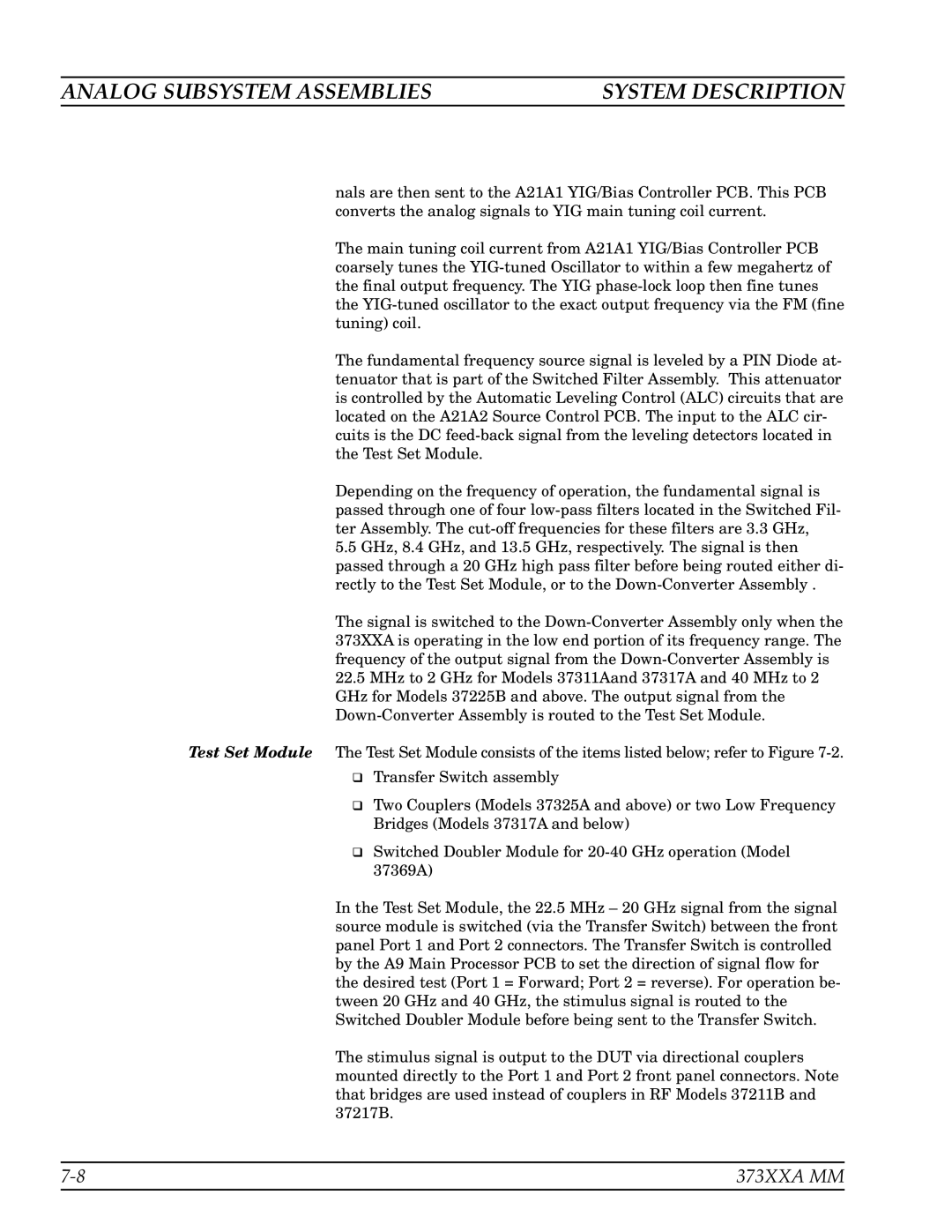373XXA specifications
The Anritsu 373XXA series is a notable line of microwave and RF signal analyzers designed for comprehensive analysis and testing of various wireless communication technologies. These analyzers are specifically crafted to meet the demands of modern communication systems, making them ideal for engineers and technicians working in wireless research, development, and manufacturing.One of the main features of the Anritsu 373XXA series is its wide frequency range, which typically spans from as low as 5 kHz to several GHz, accommodating a vast array of signal types and applications. This extensive frequency coverage allows users to test and validate all manner of systems, from LTE and 5G networks to satellite communications, yielding accurate and reliable measurement results.
The device employs advanced measurement technologies that provide in-depth analysis capabilities. Among these technologies is the ability to perform both time and frequency domain measurements, allowing users to visualize and diagnose signal integrity issues effectively. In addition, the 373XXA series incorporates vector signal analysis, which is crucial in evaluating complex modulated signals, commonly found in today’s sophisticated wireless communication protocols.
Another distinguishing characteristic of the Anritsu 373XXA is its user-friendly interface. It features a large, high-resolution display that enables easy navigation through the analyzer's functions and measurements. The intuitive design is further enhanced by customizable settings and measurement configurations that streamline the workflow, making it accessible for both novice and experienced users.
The 373XXA series also supports various digital and analog signal demodulation techniques, ensuring compatibility with an array of communication standards. Furthermore, users can benefit from its built-in signal generation capabilities, which allows for end-to-end testing of devices and systems under realistic operational conditions.
Portability is another key feature of the Anritsu 373XXA series. The compact design and lightweight structure facilitate easy transport, which is particularly advantageous for field applications where mobility is critical.
Overall, the Anritsu 373XXA series stands out as a versatile and powerful tool for professionals in the RF and microwave field, thanks to its extensive frequency range, advanced measurement technologies, user-friendly interface, and portability. Whether developing new wireless standards or troubleshooting existing systems, the 373XXA delivers precision and reliability essential for today’s dynamic communication landscape.

